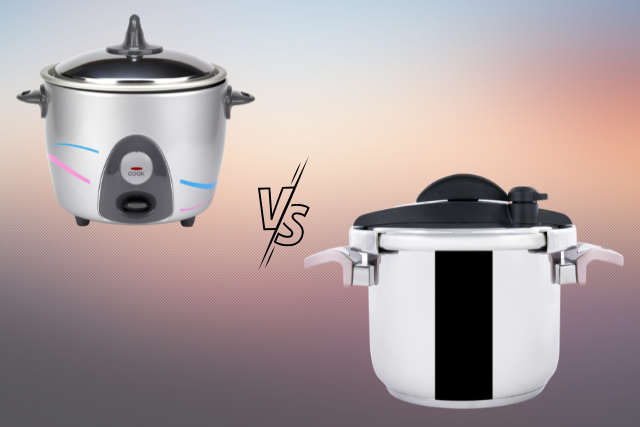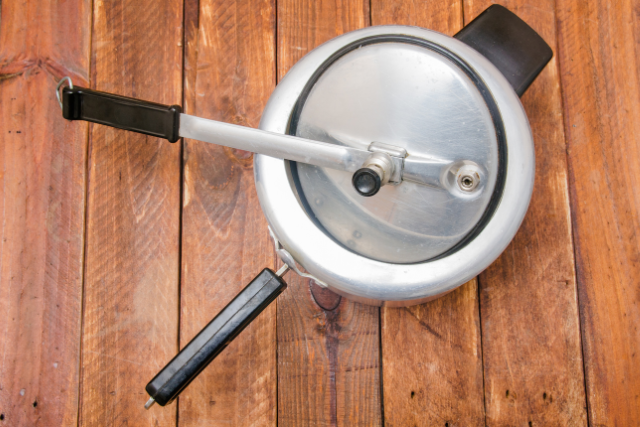Modern Trends in Pressure Cookers: A Step Towards Efficient and Flavorful Cooking
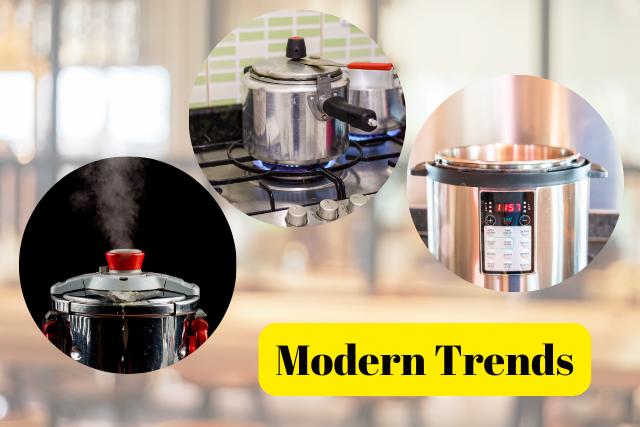
Discover the incredible modern trends in pressure cookers and revolutionize your cooking experience. From cutting down cooking times to intensifying flavors, pressure cookers have become indispensable appliances in contemporary kitchens.
This comprehensive guide will explore pressure cookers’ latest trends, innovations, and safety features.
Whether you’re a novice or an experienced home chef, this article will equip you with the knowledge and tips to make the most of your pressure cooker and easily create mouthwatering meals.
The History of Pressure Cookers
Pressure cooking has a rich history that dates back centuries. French physicist Denis Papin introduced the use of steam pressure to cook food in the 17th century. His invention, the “digester,” laid the foundation for modern pressure cookers.
Over time, pressure cookers evolved by introducing features like the pressure release valve and sealing gaskets, making them safer and more reliable.
Benefits of Pressure Cooking
Pressure cooking offers numerous benefits that have contributed to its enduring popularity. Firstly, it significantly reduces cooking time compared to traditional methods.
The high-pressure environment inside the cooker allows food to cook faster by raising the boiling point of water. This results in tender, flavorful meals in a fraction of the time.
Another advantage of pressure cooking is its ability to retain nutrients. The shorter cooking time and the minimal use of water help preserve the vitamins and minerals in the food.
This makes pressure cookers an excellent choice for health-conscious individuals who want to maintain the nutritional value of their meals.
Pressure cooking requires less water than other cooking methods, such as boiling or steaming. This saves time and helps intensify the ingredients’ flavors, resulting in more delicious dishes.
Modern Trends in Pressure Cookers
In recent years, pressure cookers have undergone significant innovations to meet the demands of modern kitchens.
One notable advancement is the introduction of programmable features. Many pressure cookers now come with digital controls that allow users to set specific cooking times and pressure levels.
This ensures precision and consistency in cooking, making it easier to achieve desired results every time.
Furthermore, some pressure cookers have smart technology, enabling remote monitoring and control through smartphone apps.
This means you can start or adjust the cooking process even when you’re away from the kitchen, adding convenience and flexibility to your cooking routine.
Another trend in modern pressure cookers is their multi-functionality. Many models now offer additional cooking modes such as slow cooking, rice cooking, sautéing, and even yogurt making.
This versatility makes pressure cookers a versatile kitchen appliance that can replace multiple traditional cooking tools, saving space and money.
Safety Features in Modern Pressure Cookers
Safety is of paramount importance when it comes to pressure cookers. Modern models have various safety features to ensure user confidence and prevent accidents.
One common safety feature is the locking mechanism, which prevents the lid from being opened while there is still pressure inside the cooker.
Pressure-release valves are another critical safety component. They regulate the pressure inside the cooker, allowing excess steam to escape. This prevents the pressure from building up to dangerous levels and minimizes the risk of explosions.
Moreover, modern pressure cookers are equipped with automatic shut-off systems. These systems detect abnormal pressure levels or temperature fluctuations and automatically turn off the heat source.
This provides an additional layer of safety and peace of mind, especially for those new to pressure cooking.
Also Read: How to ensure 100% safety while working with Pressure Cookers?
The Rise of Electric Pressure Cookers
Electric pressure cookers have gained immense popularity in recent years. These appliances combine the benefits of pressure cooking with the convenience of electric operation.
Electric pressure cookers have precise temperature and pressure controls, ensuring consistent cooking results.
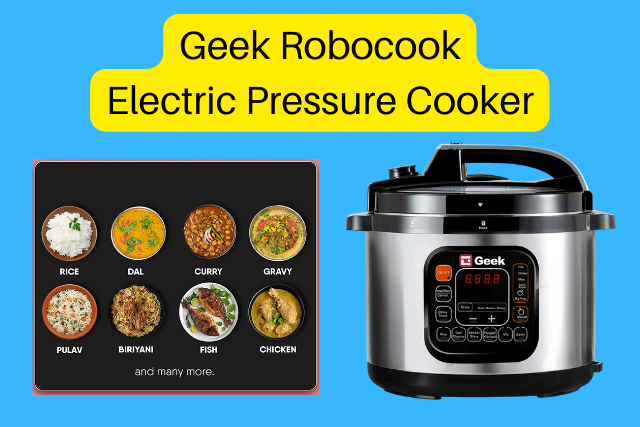
One advantage of electric pressure cookers is their ease of use. They eliminate the need for manual stovetop adjustments, making them suitable for beginners or individuals who prefer a hands-off cooking experience.
Electric pressure cookers also offer various cooking modes and pre-programmed settings, further simplifying the cooking process.
Another benefit of electric pressure cookers is their energy efficiency. They use electricity to generate heat, reducing the reliance on stovetop burners or open flames. This saves energy and makes them safer for households with children or pets.
Popular Pressure Cooker Brands
Several brands have established themselves as leaders in the pressure cooker market. Each brand offers a range of models with different features and price points to cater to diverse consumer needs. Some popular pressure cooker brands include Instant Pot, Ninja Foodi, Crock-Pot, and Breville.
Instant Pot, in particular, has gained a cult following for its versatile multi-cookers that combine the functions of a pressure cooker, slow cooker, rice cooker, steamer, and more. These brands are known for their reliability, durability, and commitment to customer satisfaction.
How to Choose the Right Pressure Cooker
Choosing the right pressure cooker can significantly enhance your cooking experience and help you easily create delicious meals.
With the wide variety of options available in the market, it’s essential to consider certain factors that will guide you toward selecting the perfect pressure cooker for your needs.
Here are some key factors to keep in mind when making your decision:
Capacity
The first step in choosing a pressure cooker is determining the appropriate capacity. Consider the number of people you typically cook for and the types of meals you’ll be preparing.
Pressure cookers come in various sizes, typically measured in quarts, ranging from small 3-quart models to larger 8-quart or more options.
If you cook for a smaller household, a 4- or 6-quart pressure cooker might be sufficient, while larger families or those who enjoy batch cooking might prefer a larger capacity.
Materials
The materials used in constructing the pressure cooker are essential for its durability and heat distribution. Stainless steel and aluminum are commonly used materials, each with its advantages. Stainless steel pressure cookers are known for their durability, resistance to staining, and even heat distribution.
On the other hand, aluminum pressure cookers are lightweight and offer excellent heat conductivity, allowing for faster cooking times. Consider your priorities in terms of durability, weight, and heat distribution when choosing the material of your pressure cooker.
Safety Features
Safety should be a top priority when selecting a pressure cooker. Look for models with essential safety features such as pressure release valves, locking mechanisms, and automatic shut-off systems.
The pressure release valve ensures that excess pressure can be released safely, preventing potential accidents.
A secure locking mechanism prevents the pressure cooker from being opened until the pressure has been completely released.
Automatic shut-off systems provide an extra layer of safety by detecting anomalies in pressure or temperature and automatically turning off the heat source. Prioritize pressure cookers with these safety features to ensure peace of mind while cooking.
Additional Functions
Consider whether you would benefit from additional functions beyond pressure cooking. Modern pressure cookers offer versatile features such as slow cooking, steaming, sautéing, or yogurt.
These additional functions can save your countertop space by eliminating the need for separate appliances. If you find these functions appealing and believe they will complement your cooking style, look for pressure cookers that offer the versatility you desire.
User-Friendliness
Look for user-friendly pressure cookers that are easy to operate. Precise controls and an intuitive interface can significantly impact your cooking experience.
Ensure that the pressure cooker you choose has easy-to-understand buttons or dials for setting pressure levels, cooking times, and other functions.
A comprehensive and well-written instruction manual is also essential, especially for beginners needing guidance on operating the pressure cooker effectively.
Customer Reviews
It’s always beneficial to read customer reviews and ratings of the pressure cooker models you are considering. Real-world experiences shared by other users can provide insights into different models’ performance, reliability, and durability.
Pay attention to feedback on features, safety, ease of use, and overall customer satisfaction. While individual experiences may vary, a pattern of positive reviews can indicate a reliable and well-regarded pressure cooker.
By considering these factors and weighing your preferences, you can select a pressure cooker that suits your cooking needs and lifestyle.
Whether you prioritize capacity, materials, safety features, additional functions, user-friendliness, or customer reviews, finding the right pressure cooker will enhance your culinary adventures and simplify your cooking process.

Tips for Using Pressure Cookers
A pressure cooker can significantly streamline your cooking process and help you create flavorful dishes in less time.
Some tips to make the most out of your pressure cooker:
Read the Manual
Start by reading the user manual provided with your pressure cooker. Familiarize yourself with the specific instructions, safety precautions, and recommended operating procedures outlined by the manufacturer. Understanding the features and functions of your pressure cooker will ensure safe and effective usage.
Begin with Simple Recipes
If you’re new to pressure cooking, start with simple recipes to gain confidence and get acquainted with the cooking process. Familiarize yourself with the cooking times, pressure levels, and release methods required for different ingredients.
Adjust Cooking Times
While pressure cooker recipes often provide recommended cooking times, it’s important to remember that ingredient size, altitude, and personal preferences can affect cooking times.
Use the recommended cooking times as a starting point and make necessary adjustments to achieve your desired level of doneness and texture.
Natural Pressure Release vs. Quick Pressure Release
Understand the difference between natural pressure release (NPR) and quick pressure release (QPR) methods.
NPR allows the pressure to decrease naturally over time, while QPR involves manually releasing the pressure using the pressure release valve.
Specific recipes like delicate foods or dishes with high liquid content may benefit from NPR to prevent overcooking or liquid splattering.
On the other hand, QPR can be used for recipes that require a quick release of pressure, such as vegetables that need to retain their crispness.
Avoid Overfilling
It’s important to avoid overfilling your pressure cooker to ensure proper pressure buildup and cooking. Most pressure cookers have a maximum fill line indicated inside the pot.
This guideline prevents food or liquid from blocking the pressure valve and hindering the cooking process.
Use Proper Liquid Ratios
Pressure cookers rely on the generation of steam to create pressure and cook food. Using the recommended amount of liquid specified in the recipe is crucial to prevent the pressure cooker from running dry.
Follow the guidelines provided by the manufacturer regarding the minimum amount of liquid required for your specific pressure cooker model.
Experiment with Flavors
Pressure cookers are excellent at infusing flavors into dishes. Take advantage of this by adding herbs, spices, and aromatics to your recipes.
The pressurized environment helps ingredients release their flavors more intensely, resulting in delicious and well-seasoned dishes.
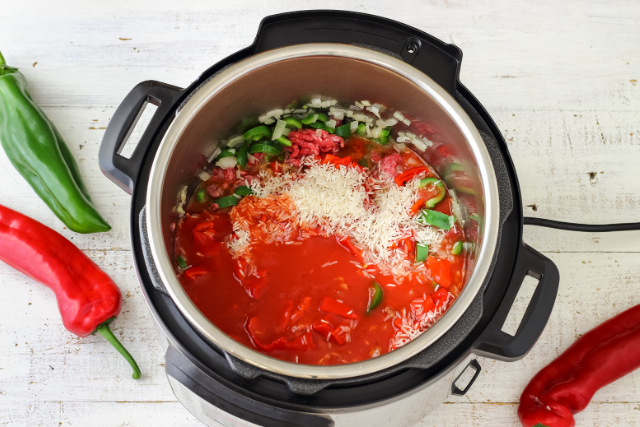
As you gain experience, feel free to experiment with different recipes, ingredients, and cooking techniques to explore your pressure cooker’s capabilities. Enjoy the convenience and delicious results that pressure cooking offers!
Also Read: Best Electric Pressure Cooker in India
FAQs
1. Are pressure cookers safe to use?
Modern pressure cookers have multiple safety features to ensure safe and hassle-free cooking. However, following the manufacturer’s instructions and adhering to safety precautions to prevent accidents is essential.
2. Can I cook frozen ingredients in a pressure cooker?
While it is possible to cook frozen ingredients in a pressure cooker, it is generally recommended to thaw them first for more even cooking. Thawing allows the ingredients to cook more uniformly and ensures optimal texture and taste.
3. Can I use a pressure cooker for canning?
Not all pressure cookers are suitable for canning. If you’re interested in canning, look for pressure canners designed explicitly for that purpose. Pressure canners have the capacity and safety features to handle the high temperatures and pressures required for canning.
4. How long does it take for a pressure cooker to build up pressure?
The time it takes for a pressure cooker to build up pressure can vary depending on the model and the amount of food inside. A pressure cooker takes 10 to 15 minutes to reach the desired pressure level.
5. Can I open the pressure cooker before the pressure is fully released?
No, waiting until the pressure is fully released before opening the pressure cooker is crucial to avoid any potential accidents. Opening the cooker prematurely can lead to sudden steam release and cause burns or other injuries.
6. How often should I replace the sealing ring in my pressure cooker?
The frequency of replacing the sealing ring depends on usage and wear. Inspecting the sealing ring regularly for cracks, tears, or signs of deterioration is recommended. If needed, replace the sealing ring per the manufacturer’s recommendations or when it no longer provides a tight seal.
7. Can I use my pressure cooker to cook delicate seafood or dessert?
Pressure cookers can cook delicate foods like seafood and desserts. However, it’s essential to adjust cooking times and release methods to prevent overcooking or altering the texture of delicate ingredients. Follow specific recipes and guidelines for the best results.
8. Can I still use traditional stovetop pressure cookers for modern recipes?
Absolutely! Traditional stovetop pressure cookers remain reliable and effective for modern recipes. While they may not have all the programmable features or smart technology, they can still provide efficient pressure cooking results with proper monitoring and adherence to recipe guidelines.
9. Are modern pressure cookers energy-efficient?
These modern pressure cookers are known for their energy efficiency. The shorter cooking times and sealed environment help conserve energy compared to traditional cooking methods. Pressure cookers also require less water, further contributing to their energy-saving benefits.
10. What are the advantages of using electric pressure cookers?
Electric pressure cookers provide easy use with programmable settings, consistent cooking results, and enhanced safety features. They eliminate the need for stovetop monitoring and offer additional cooking functions, making them suitable for various recipes.
11. Which popular pressure cooker brands incorporate modern trends?
Popular pressure cooker brands such as Instant Pot, Ninja Foodi, Crock-Pot, and Breville have embraced modern trends by introducing innovative features, smart technology integration, and multi-functionality in their pressure cooker models.


